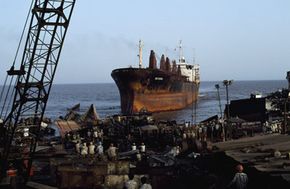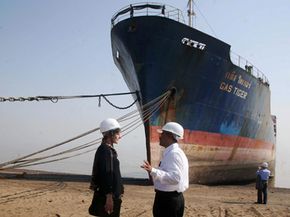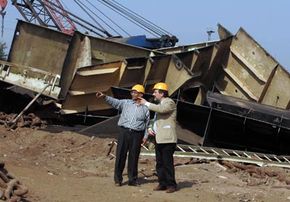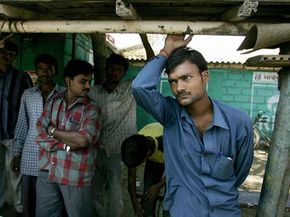If you're planning your next vacation, you probably won't find Alang in any travel guides. You may not even find it on the map. This desolate six-mile stretch of land was once one of the most impoverished areas in India. But, in recent years, this piece of the Indian coastline in Gurajat state has become the world's largest shipbreaking yard.
Alang, 185 miles (298 kilometers) northwest of Bombay, serves as the final stop for about half of the world's maritime vessels [source: Burns]. Alang is literally a graveyard for ships -- the world's once most powerful ships come here to die. Shipbreaking is just what it sounds like. Piece by piece, workers use basic tools to dismantle ships that are too old or too costly to maintain.
Advertisement
But why choose this remote spot to serve as the final destination for so many of the world's obsolete ships? For one, Alang's beachfront location is ideal for shipbreaking. Tides are heavy there, and the natural slope of the beach makes it easy for a ship to be run on shore.
Most importantly, Alang supplies the shipbreaking industry with an abundant source of laborers who are willing to work for low wages in risky, and sometimes life-threatening, business. What's more, India's environmental and safety standards are much more lenient than those of its customers, like Japan, Korea, Russia, Germany and the United States.
These far-reaching issues spark questions facing the global community. Are developed nations taking advantage of developing countries by sending their trash to those ill-equipped to deal with it? Or are developed nations providing developing regions with an economic stimulus that, although potentially dangerous to workers, gives wages to those who would starve otherwise? Could the debate be far more complex than either of these positions?
To look for answers to these questions, let's begin by learning more about how shipbreaking and ship recycling became a booming business at Alang, India.
Advertisement





